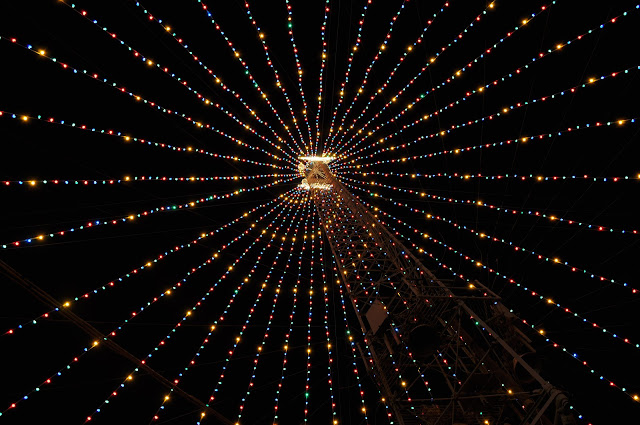Guess where I am?
It was pitch dark, windy and cold on that day... I was visiting Austin with some of my best friends... We read online that this 25 feet high Christmas tree is the highlight there. Thought of doing some experiment so I went underneath it...
Exif Data: Shutter Speed: 1 sec | Aperture: f/7.1 | ISO: 200 | Focal Length: 18mm

FYI... this is not another 'trailing lights' example where you keep your DSLR steady on tripod at 1 or 2 sec shutter speed and take picture. In this example, the lights are not moving so you have to move your DSLR... rather its lens.
So I kept the same 1 sec shutter speed and clicked the picture as above... but rotated my lenses once from 18mm focal length to 48mm (Zoomed-in) during that 1 sec period and I got the effects (see below).
Exif Data: Shutter Speed: 1 sec | Aperture: f/11 | ISO: 200 | Focal Length: 48mm
It was pitch dark, windy and cold on that day... I was visiting Austin with some of my best friends... We read online that this 25 feet high Christmas tree is the highlight there. Thought of doing some experiment so I went underneath it...
Exif Data: Shutter Speed: 1 sec | Aperture: f/7.1 | ISO: 200 | Focal Length: 18mm

FYI... this is not another 'trailing lights' example where you keep your DSLR steady on tripod at 1 or 2 sec shutter speed and take picture. In this example, the lights are not moving so you have to move your DSLR... rather its lens.
So I kept the same 1 sec shutter speed and clicked the picture as above... but rotated my lenses once from 18mm focal length to 48mm (Zoomed-in) during that 1 sec period and I got the effects (see below).
Exif Data: Shutter Speed: 1 sec | Aperture: f/11 | ISO: 200 | Focal Length: 48mm



